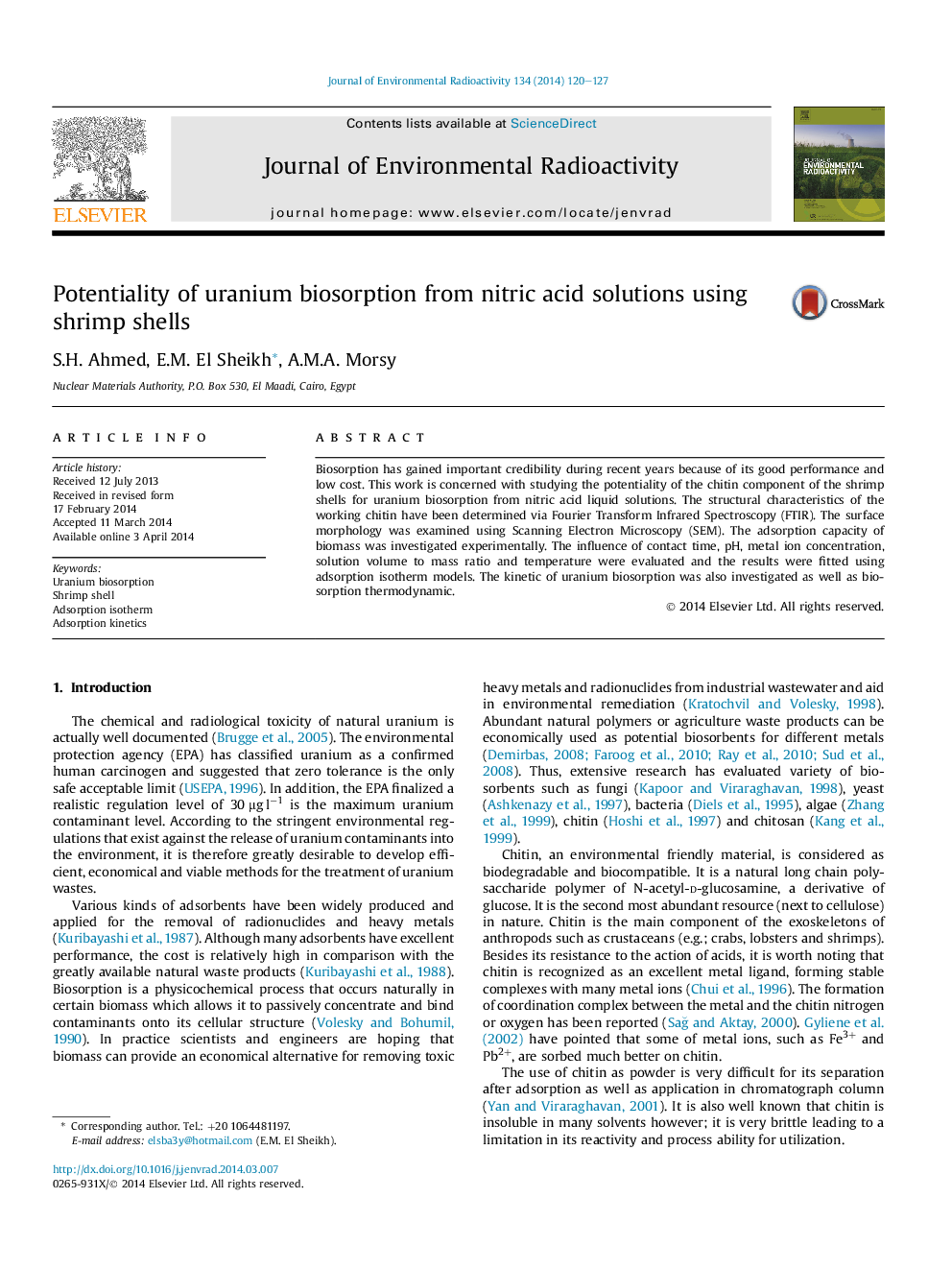| Article ID | Journal | Published Year | Pages | File Type |
|---|---|---|---|---|
| 1737982 | Journal of Environmental Radioactivity | 2014 | 8 Pages |
•This study shows the potentially for shrimp shell beads for uranium adsorption.•The max. biosorption was achieved at pH 3.6, contact time 60 min, S/L ratio 1:50.•Uranium sorption follows Langmuir isotherm with theoretical capacity of 25.31 g/kg.•The nature of sorption process of the sorbents is spontaneous and exothermic.•The rate of sorption follows pseudo second-order.
Biosorption has gained important credibility during recent years because of its good performance and low cost. This work is concerned with studying the potentiality of the chitin component of the shrimp shells for uranium biosorption from nitric acid liquid solutions. The structural characteristics of the working chitin have been determined via Fourier Transform Infrared Spectroscopy (FTIR). The surface morphology was examined using Scanning Electron Microscopy (SEM). The adsorption capacity of biomass was investigated experimentally. The influence of contact time, pH, metal ion concentration, solution volume to mass ratio and temperature were evaluated and the results were fitted using adsorption isotherm models. The kinetic of uranium biosorption was also investigated as well as biosorption thermodynamic.
Graphical abstractPhysicochemical process of biosorption is known to be promising technique due to the ease of operation and comparable low cost of biosorbant application. Chitin flakes extracted from shrimp shells show potentiality in uranium adsorption reached 7.48 mg uranium at the following conditions: 60 min contact time, pH 3.66, 50:1 V/m ration and at room temperature. The theoretical sorption capacity was 25.31 mg g−1, according to Langmuir isotherm model. The rate of sorption follows pseudo second-order. The nature of biosorption process is spontaneous and exothermic.Figure optionsDownload full-size imageDownload as PowerPoint slide
